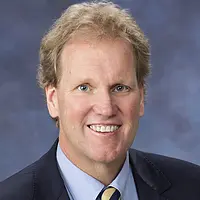In 2016, 11.5 million people 12 + years old in the U.S. reported having misused prescription pain medications in the past year. According to the National Institute for Drug Abuse, 115 Americans die every day from opioid overdose, which includes prescription pain relievers, heroin and fentanyl. Recently at the Department of Justice’s first National Opioid Summit, a top priority that was repeatedly stated was the cracking down on unscrupulous providers and pharmacies. While this is important, what was missing from this conversation were strategies for improving the communications between reputable prescribers and pharmacists.
The Centers for Disease Control and Prevention recently released guidelines for prescribing opioids for chronic pain that provide recommendations for opioid prescribing. These guidelines provide strategies for prescribers and pharmacists to help assist in the reduction of opioid misuse and diversion, yet they do not specifically describe recommendations for how prescribers and pharmacists better communicate.
This is unfortunate, as improving communication between prescribers and pharmacists could be an important step in reducing opioid misuse and diversion and improving public health. While much of the education and training available on reducing opioid misuse and diversion stresses the importance of interprofessional communication between prescribers and pharmacists, few studies have explored those communication patterns directly.
To better understand this issue, a team of researchers and I conducted in-depth individual interviews with 48 primary care providers (PCPs) and 60 community pharmacists about the nature, frequency, and content of communication between PCPs and pharmacists focusing on opioids. Recommendations from the participants regarding ways to improve communication between PCPs and pharmacists to enhance information sharing and good decision making were also elicited.
These interviews were conducted across four states in the U.S., Washington, Idaho, Kentucky and Arkansas. PCP and pharmacists were sought from rural and urban locations, and from parts of the country with varying levels of prescribing. Arkansas represented a “high” prescribing area and participants were recruited from both urban and rural areas across the state. Kentucky represented a “very high” prescribing area (at least initially) and participants were recruited from both urban and rural locations across the state. Idaho represented a “medium” prescribing area, and participants were recruited exclusively from a rural section of the state. Washington represented a “medium” prescribing area, and participants were recruited exclusively from an urban location.
We found that communication between opioid prescribers and pharmacists may not always flow as smoothly as could be hoped.
Although the amount of communication reported by PCPs and pharmacists varied widely, the content of communication usually centered on questions of dosing, timing of the prescription, and/or evidence of potential misuse/diversion. When communication was focused on such information, it appeared positive for both parties.
Both parties also agreed that physical proximity between physicians and pharmacists, as in when both work for the same healthcare system or in the same building, also increased the likelihood for more frequent and positive communication.
However, the opinions of pharmacists and physicians diverged in important areas.
While physicians agreed that it was generally easy to get ahold of pharmacists (all pharmacies have a special line for providers), pharmacists noted that it was often difficult to contact physicians. This was the major concern elicited from pharmacists. Many pharmacists described calling to request information missing on a prescription and being required to leave a message, causing delays in getting the medication to the patient. Some pharmacist participants offered recommendations for improved communication with PCPs, such as “direct lines” being kept open for opioid consults and better non-verbal information sharing, like providing a diagnosis and other information on prescriptions.
In general, pharmacists also reported feeling uncomfortable with seeming to question a physician’s judgement. This reluctance seemed to be based on unspoken hierarchies within the medical profession as well as previous negative or defensive reactions to questioning from physicians. On the other hand, PCPs reported no such concerns.
Although both prescribers and physicians expressed a desire for greater communication, further research is necessary to explore strategies for encouraging positive communication. Increased communication between the two could improve decision making around prescribing and dispensing of prescription opioids and prevent their misuse and diversion.
We know that talking things out often presents the quickest way to solve a problem. While the opioid epidemic is far too complex to be settled with just one strategy alone, the research does show that open and improved communications between PCPs and pharmacists can be an effective tool to help safely serve patients with chronic pain. When 100s of lives are at stake daily, any strategy that shows promise should be considered, researched and explored.
Dr. Mark Edlund is a senior researcher at the global research institute RTI International and a practicing psychiatrist who focuses on patients with chronic pain and substance use disorders.
